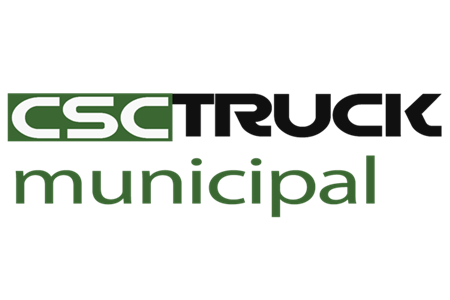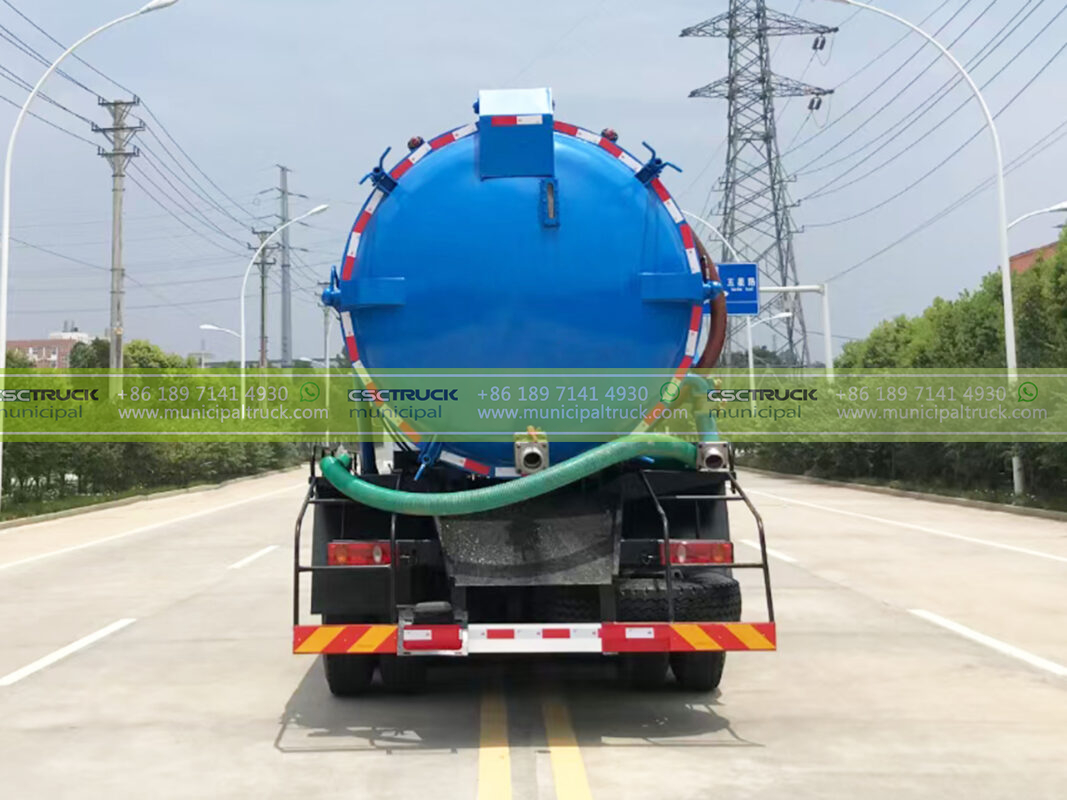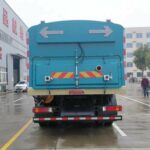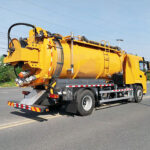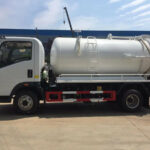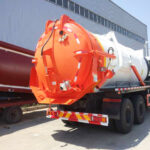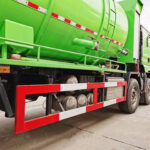As cities globally grapple with aging sewer networks—over 25% of which exceed 50 years old in North America and Europe—the vacuum sewer truck has emerged as a linchpin for sustainable infrastructure management. By enabling non-excavation repairs and diagnostics, these vehicles prevent the 2,500–8,000 per linear meter costs of traditional road excavations while mitigating urban chaos. This article explores the engineered systems, operational methodologies, and transformative impact of vacuum technology on municipal sewer stewardship.
The Hidden Crisis Beneath Our Streets
Municipalities face a trilemma: failing pipes, limited budgets, and zero tolerance for prolonged road closures. The American Society of Civil Engineers estimates that water main breaks occur every two minutes across the US, costing $2.6 billion annually in repairs and collateral damage to businesses. Traditional “dig-and-replace” methods compound these losses through:
- Traffic disruption: Lane closures reduce arterial road capacity by 40–60%, escalating commute times and emissions
- Utility conflicts: Accidentally severed gas/electric lines during excavation cause 15% of urban utility outages
- Surface degradation: Repeated trenching compromises pavement integrity, doubling long-term maintenance costs
Vacuum technology circumvents this destruction by transforming sewer maintenance into a surface-level operation.
Core Technology: Engineering the Subsurface Vacuum
Modern vacuum sewer trucks integrate aerospace-derived negative-pressure systems capable of extracting 50+ cubic meters of solids per hour without excavation:
Triple-Stage Cyclonic Separation
Waste enters a multi-chamber vortex separator where centrifugal forces isolate solids (>2mm) from liquids. The Vactor 2100 Series achieves 99.8% solids capture efficiency while protecting downstream pumps from abrasive damage—critical for handling construction debris or hardened grease.
Variable-Flow Vacuum Generators
Twin 450-horsepower diesel engines power rotary lobe pumps generating 25–28 inches Hg vacuum pressure. Adjustable nozzles maintain optimal suction whether clearing sandy sediments in Dubai or viscous sludge in Toronto winter sewers.
Telematics-Enabled Diagnostics
IoT sensors monitor pipe wall thickness via laser profilometry during suction operations. Rotterdam’s fleet detected 32 high-risk corrosion points in 2024 using embedded LIDAR scanners—preventing collapses that would have required 17 excavation sites.
Operational Superiority Over Traditional Methods
The paradigm shift from reactive digging to precision subsurface intervention manifests in three key advantages:
Emergency Response Acceleration
When a 100-year storm flooded Montreal’s Plateau district in 2023, vacuum trucks cleared 18 blocked mains in 9 hours—a task requiring 3+ days with excavation crews. Their mobility allows rapid deployment across multiple sites without heavy equipment transport.
Preventative Maintenance Optimization
Regular vacuum cleaning extends pipe lifespan by removing corrosive hydrogen sulfide (H₂S) biofilms. Hamburg’s predictive maintenance program reduced sewer replacement rates by 62% through quarterly vacuum cycles combined with AI-based decay modeling.
Hazard Mitigation
Confined-space entries for manual cleaning cause 40+ fatalities annually in the US alone. Vacuum extraction eliminates worker entry into toxic environments, while explosion-proof systems prevent methane ignition in high-risk zones.
Synergy with Complementary Technologies
Maximum infrastructure preservation occurs when vacuum trucks integrate with adjacent asset management systems:
Robotic Cutters & Lateral Reamers
For roots or mineral deposits requiring mechanical intervention, truck-deployed robots perform internal cutting via umbilical control. The CUES Sphinx Cutter clears obstructions up to 150 meters from the access point—no trenching needed.
CIPP Lining Deployment
After vacuum cleaning, cured-in-place-pipe (CIPP) liners are inverted through existing manholes. Berlin saved €14 million in 2024 by relining 8km of corroded pipes beneath Unter den Linden Boulevard instead of excavating this heritage corridor.
Where vacuum trucks excel at solids removal, sewer jetting trucks provide complementary hydrodynamic scouring. Their 3,000-psi rotary nozzles disintegrate grease and scale, while vacuum units immediately extract debris—a closed-loop solution eliminating spoilage haulage.
Toward Zero-Excavation Urban Futures
The next evolution transforms vacuum trucks into data-driven infrastructure guardians:
- Digital Twins: Real-time suction resistance data builds 3D pipe condition models for entire networks
- Autonomous Routing: AI optimizes cleaning schedules based on rainfall forecasts, usage patterns, and risk algorithms
- Material Recovery: Onboard separators extract phosphorus from wastewater for fertilizer production—pioneered in Amsterdam’s circular economy program
- Microtunneling Support: Vacuum units remove spoil from pipe-jacking operations, enabling trenchless installation of new lines beneath highways
Singapore’s PUB utility now achieves 98% of sewer repairs without excavations through this integrated approach.
The Ripple Effect on Urban Livability
Beyond infrastructure metrics, vacuum technology delivers invisible dividends to cities:
- Business Continuity: Toronto’s Queen Street retailers reported <5% revenue loss during 2024 sewer upgrades versus 30–60% in previous excavation projects
- Noise Reduction: Electric-hybrid vacuum trucks operate at 68 dBA—quieter than garbage collection—enabling night work in residential zones
- Ecological Preservation: Avoiding excavations protects tree root systems; Melbourne preserved 240 mature elms along St Kilda Road during sewer renewal
As sweeper trucks maintain surface cleanliness, vacuum sewer trucks perform parallel stewardship below ground. Together with sprinkler trucks that suppress dust from construction sites, they form a trifecta of non-disruptive urban care—proving that the most advanced city infrastructure is often the one you never see being repaired. Their silent efficiency embodies the principle that in great cities, solutions flow as smoothly as the wastewater they manage.
